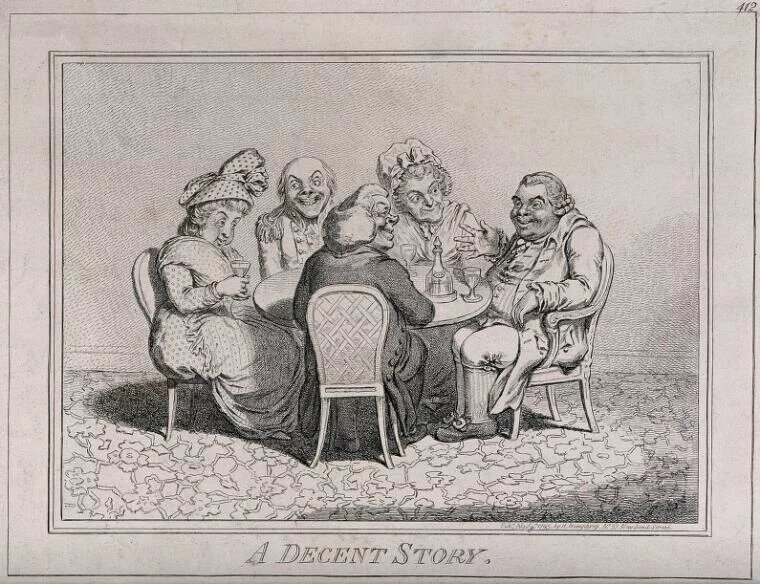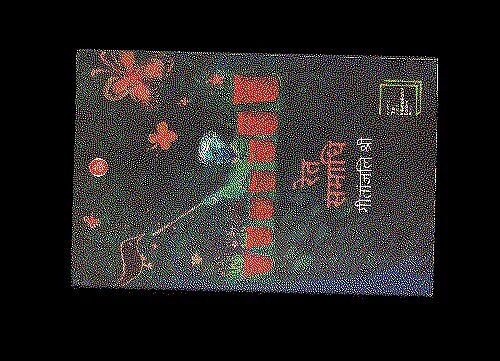
Liberating words and worlds

“Stories matter. Many stories matter. Stories have been used to dispossess and to malign but stories can also be used to empower and to humanise….When we reject the single story, when we realise that there is never a single story about any place, we regain a kind of paradise.”
Chimamanda Adichie (2009)
“A border, gentlemen, is for crossing...A border says jump.”
(Shree 2022, 653)
We are stories
Humans are a story-telling species. Our capacious imaginations have been conjuring stories, shaping our very being(s) from our earliest moments as creatures with language. Languages, genres, imaginations, creatures. All plural! From the sketchy but compelling cave drawings to hieroglyphs and complex scripts, and running alongside these more ‘evolved’ forms, a steady unbroken stream of orality that is a living connection to a primeval narrative urge, it is impossible to conceive of humanity in terms of a single language or a single story. This extends beyond the macrocosm of our collective selves to the microcosm of smaller social forms. Indeed, it applies to our supposedly ‘individual’ selves – complex, contradictory, changing and entirely ‘dividual’.
A glance at global history reveals that periodic attempts to diminish and contain this complexity of stories in the name of various causes have been a running refrain. This is particularly evident to those who are or have been at the receiving end of stories –other peoples’ stories, while their own remain muted. Conversely, since privilege is notoriously blind to itself, those telling the dominant stories can afford a selective deafness towards those they have muted, albeit unintentionally. They may argue in a well-intentioned way that this diversity is the cacophony of the babble, a pandemonium. They may label this diversity divisive, something that prohibits shared humanity. Controlling and disciplining this diversity in the name of some universal common good, often as an alibi for narrower interests, of those telling that one story, is the parallel narrative. Much utopian thought has been tainted with this presumptuous power play, more visible in hindsight. The grand narratives of modernity and progress can well feed into it, as can tradition. Indeed, the two categories of engagement – liberatory and repressive – can work in tandem, or one can degenerate into the other. The historical trajectory of revolutions and their fallouts bear testimony to this historical irony.
Tales and tellers
One antidote to this tendency to silence stories, to alert us to the need for constant vigilance comes to us via literature, the domain of human endeavour dedicated, as it were, to the proliferation of stories, mostly for their own sake, though always embedded in their cultural and historical context. Creative writers have expectedly much to say here. Take the Nigerian writer Chimamanda Ngozie Adichie, for eg, who speaks eloquently of “the danger of a single story” and the concomitant need for recognising, retrieving, and disseminating multiple stories. As a postcolonial inheritor of the complex legacy of colonialisms (yes, that too exists in the plural, and across time and place) that continue to shape and limit our understanding, she uses the universal master language, namely English, rather well. Like her older compatriot, the Nobel Prize awardee Chinua Achebe, she uses this linguistic remnant of Nigeria’s colonial past against itself to subvert narrow Anglo-centrism from within, by highlighting, with humour and finesse, her encounters with American cultural hegemony as a student in the United States. She notes how her appreciation of the absurdity of that flattening of her identity via stereotypes about Africa marked a growth from an earlier stage of her consciousness of immersive absorption in English Literature growing up in Nigeria, making her, like many a colonised subject, a cultural mimic of that colonising power. She suggests that she had failed to be attentive to her own difference, her own story as an African, and as a woman. But she doesn’t stop there. In an admirable self-reflexive turn, she makes the story richer: She tells yet another story of the self by turning the critical gaze upon her own family, their own relative privilege and social distance preventing them from acknowledging the cultural richness and abundance of their own (till then pitied) class ‘others’. As she concludes: “Stories have been used to dispossess and to malign but stories can also be used to empower and to humanise.”
Adichie’s point is as eloquent as it is simple. Our identities are fluid and multiple. The oppressed or silenced in one context can quite unconsciously be the oppressors and silencers in another, as is suggested by the term ‘intersectionality’. To understand this is to move closer to understanding how single frames can deeply compromise an honest, compassionate, or even pragmatic engagement with the world, whatever the scale of our engagement be: From the cosmic/ global to the local/ individual. Identities are fluid. But identities are also sought (needed?) to be fixed. The term identity politics gestures towards just such fixity. So that one end of the political spectrum insists that minority identities, silenced selves, need to be heard and consolidated, rather than float in some vague amoebic oceanic oneness that swallows their struggles and their voices. However, that strategic and necessary consolidation itself can threaten the notion of fluidity and open-endedness that are needed to disperse, to open up spaces for articulation, exploration, and connection. This tension plays itself out in other ways in Buddhist concepts of relative truth and ultimate truth, but that, as they say, is another story!
Great literature pushes our perceptions of singular truths and it does so by engaging the most untameable and powerful human faculty: The imagination. This happens at all levels. First, each reader interprets the story differently. Second, the same reader can read the same story differently at different moments: Indeed, like the river in Heraclites’ famous statement, we never read the same story twice! At a third level, profoundly polyvalent texts like the Indian epics, the Mahabharata and the Ramayana, reward reading for the plurality they contain and further accrue, especially as they travel and get told and re-told across temporal and geographical distances, across genres and languages. Preserving these pluralities is vital to their vitality as living narratives and of the cultures that (re)interpret them. It’s well acknowledged that drama such as Shakespeare’s does plurality rather well, and travels equally well, in countless adaptations across the world. However, even an apparently didactic epic like Milton’s Paradise Lost is rife with possibilities of plural readings, as indeed is the Bible. Novels also pluralise our perceptions by ventriloquising multiple vantage points from within an affective register (Dostoevsky’s The Brothers Karamazov comes to mind) and forcing us to reconsider our reality, our ethics and politics, from other perspectives. Our geographical, cultural, national, linguistic, gendered, others can be animated as living presences, expanding our insular, bounded selves, not through the use of dry logic, but via the often more effective affective mode - through image, sound, symbol, and empathy. This access via affect is indeed the unique province and power of the arts, and of literature in particular.
Tomb of Sand: Breaching borders
One may consider a remarkable literary text published recently: Indian writer Geetanjali Shree’s Hindi novel Ret Samadhi, translated into English as Tomb of Sand. While the book came into international limelight as the first novel from South Asia to win the International Booker Prize earlier in 2022, it also invited other forms of scrutiny. It’s a rich and fascinating phenomenon whose life as original text, translation, and post-award existence lends itself to our topic, as it both celebrates plurality and complicates it.
Geetanjali Shree’s novel draws us into a spacious and multifarious world. It starts with a consideration of story-telling and it soon becomes obvious that we are entering a sea of stories with streams running along different directions. The book is also an ode to words, to their sound, suggestiveness, and protean power to take narratives in magical, unlikely directions. The narrator even suggests that the story writes itself. In thus diffusing the sense of singular author, or authority, the writer becomes a medium, a carrier of words which in turn carry the narrative. To complicate ‘realistic’ expectations, the novel deploys fantasy. Reality here crosses boundaries – of genders, of nations, of languages, even of species.
The octogenarian grandmother Amma, who upon losing her husband seems to turn her back to the world, soon surprises us with her countless stories waiting to be rebirthed. She wilfully moves out of her son’s house to live with her bohemian daughter, but goes further and befriends a vibrant transgender character called Rosie. The trio defy gender norms, they defy state boundaries by travelling without visas, and the novel even defies species-limits by including intelligent talking birds that interrogate human hubris. The novel is both a multifaceted study of power and a narrative subversion of it. Through the family, it reveals how power and patriarchy harm women and men; through the back story of the Partition of India and Pakistan, it shows how nation-states harm entire populations and devastate individual lives; and through the actions of its protagonists, it demonstrates how women can defy these inheritances. But this novel of surprises also shows how overtly defiant women may find themselves outdone by the less obviously so.
Reading Ret Samadhi and Tomb of Sand is something of a roller coaster ride- exhilarating and challenging, even exasperating. Its span and scope, its playful exuberance and idiosyncratic originality of style reminds one of Walter Whitman’s Leaves of Grass, another paean to plurality. It is vast, it contains multitudes. However, closer home is the Mahabharata, the grand epic that it evokes at the very outset, a polyvalent epic that raises deeply ambivalent ethical and moral questions. The extended family with its squabbles and silliness exists but true to the epic analogy, through an exercise of a capacious, liberating imagination, the novel stretches to include in its wise, witty, and compassionate embrace, a larger human and non-human world. It is easy to see how diverse South Asian traditions of storytelling – the epic Mahabharata, the animal fables of the Panchatantra, and the oral story telling tradition called qissagoi – shape it. It’s a smorgasbord of a novella cornucopia, drawing upon deep-rooted cultures of ‘manyness’, a loose structure, a wayward conversational impulse, which is as old as folk tales and as avant garde as magic realism. The form is appropriate to the content as the novel immerses the reader in the cacophony that postcolonial India simultaneously inhabits – here words and worlds collide, sing, and dance, defying any effort to move swiftly from point A to point B. This digressive quality, with diverse dialects and languages co-existing, defeats attempts at a quick, simplistic read.
The novel slows us down to savour its peculiar linguistic plurality. Its musings are in a Hindi that’s not the stilted language taught in schools and felt as an imposition by other regions, but a well-loved, robust, and idiomatically redolent of the local. But it is affectionate towards the youthful urbane cool ‘Hinglish’ of the grandson, and dexterous in many tongues, as befits a novel representing India, whose nationalism, unlike most of Europe’s, is anything but monolingual. Cultural practices that are both ‘high’ and ‘low’ jostle here, as the Indian concept of primal creativity as leela is given full play, moving beyond the confines of status-quoist realism. No wonder, birds and butterflies and wands are ‘characters’ in this supra-human and yet all-too-human novel. The genre of the ‘novel’ is returned to its etymological roots and made new, just like Amma, the grandmother, who reinvents herself at an age when women are meant to bury their dreams and prepare for death. In this it tells another story of ageing, especially of the ageing of women. It tells another story of patriarchy, and yet another of radicalism, as we see the elder son also as a victim of his social role and not simply as a monstrous patriarch, or as we see Amma outdoing the bohemian daughter in her quiet, unfussy embrace of the radical otherness of Rosie, the transgender, a character whose plurality of gender unsettles even the well-travelled daughter’s self-image as the liberator of her mother.
Given the time and leisure it demands and deserves, the novel performs the deepest purpose of art: to delight, to question, and to illuminate in equal parts. The mixed response to it has highlighted that in India today, a taste for single narratives lingers, or perhaps has come to reassert itself, especially when it comes to narratives about self, family, and nation. But this is a novel that eschews programmatic preaching altogether, whether it be regarding being Indian or being feminist. This raises the important question: Is there only one single mode of being unconventional, or singular, if you please? As the South African writer Nadine Gordimer (1976, 53-55), while contemplating the writer’s freedom, pointed out, what are we to do with an “orthodoxy of opposition”, one that mutes other ‘other voices’? In that speech, she goes on to say: “The fact is, even on the side of the angels, a writer has to reserve the right to tell the truth as he sees it, in his own words, without being accused of letting the side down.”
To end with the beginning: The title itself plays with plurality – in the original and in translation, and in the gap between the two. Ret Samadhi translated as Tomb of Sand is both a freezing of meaning and a liberation of potentiality. A samadhi is not a tomb. Samadhi is suggestive of both an act or state of deep meditation and a place that commemorates the dead, one typically associated with a spiritual practitioner. With its strong suggestions of a stillness that is not death but potentiality, it rewrites the story of ‘action’ and ‘inaction’. A tomb, on the other hand, implies closure; it commemorates the dead, especially those deemed great in terms either sacred or secular; the irony of this secular commemorative impulse is evoked so powerfully by so much literature that dwells on time and mortality, such as Tagore’s poem ‘Shahjehan’. Samadhi suggests a deepening of inner experience; tomb connotes external, visible monumentalisation. To capture this polyphony of samadhi, Rockwell’s English has had to resort to a plurality of equivalences: her epigraph lists ‘meditation’, ‘trance’, and ‘tomb’. In the play of these various meanings lies the mystery of Amma’s magical resurrection and insurrection. The novel’s bold rebirth into a larger world of global readership crossing linguistic barriers reaffirms that borders, all borders, are there to be crossed, that words and worlds are meant to be free.
References
Adichie, Chimamanda Ngozi. 2009. The danger of a single story. TEDGlobal.
Shree Geetanjali. 2022. Tomb of Sand (Trans. Daisy Rockwell from Hindi original Ret Samadhi). Penguin Books,
Gordimer, Nadine. 1976. A Writer’s Freedom. Index on Censorship, Vol 5: Issue 2.
Disclaimer: This article was prepared with the support of the Heinrich Böll Stiftung India. The views and analysis contained in the publication are those of the author and do not necessarily represent the views of the Heinrich Böll Stiftung/and the author's affiliated institution.




